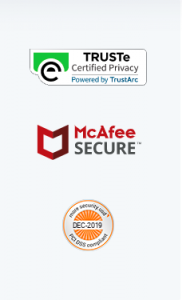Description
Question 1. (100/3 pts.) Suppose that the food items that the decision maker (DM, henceforth)
can order at a restaurant are given by {k, l, s, h} (k for köfte – meatballs, l for lüfer –“the fish” of
Bosphorus, s for salad, and h for helva). The DM goes to the restaurant which o↵ers a non-empty
subset of these dishes as its menu. The choice protocol of the DM is given as follows:
• The DM orders (i.e., chooses) s whenever s is on the menu;
• the DM orders h whenever h is on the menu;
• the DM orders k whenever it is on the menu while l is not, and the DM orders l whenever it
is on the menu while k is not;
• if both k and l are on the menu, then the DM orders
– l (and not k) if h is on the menu,
– k (and not l) if h is not on the menu.
A. Analyze (ideally prove) whether or not properties ↵ and
hold in this example.
B. Can one come up with a well-defined preference relation which is complete, reflexive, and
transitive for this DM? (Alternatively, can one find a utility function of this DM?) If so,
identify it. If not, discuss in detail (ideally prove) why it is not possible.
C. Due to shortage of tahin, suppose h is not available (therefore, h cannot be on the menu!).
As a result, now, is there a well-defined preference relation which is complete, reflexive, and
transitive representing this choice behavior? (Alternatively, can one come up with a utility
representation for this DM?) If so, identify it. If not, discuss in detail (ideally prove) why it
is not possible.
2
Question 2. (100/3 pts.) Consider a strictly risk averse owner of a property (e.g. a house) of
value W who has a monetary utility function u(·) (which due to strict risk aversion must be strictly
concave). There is a probability p that this property can be seriously damaged due to fire and the
amount of such damage is denoted by D with D > 0 and D < W .
Meanwhile, there is a (risk neutral) insurance company which o↵ers an insurance contract with
full coverage for a premium ⇡ 0. Full coverage means that the face value of the contract is given
by D, i.e. the insurance company would pay D if there were to be a fire.
p
A. Suppose u(x) = x and W = 400000 and D = 250000 and p = 0.10. Find the profit
maximizing insurance premium and the resulting profit of the insurance company.
When the property is fully insured, the owner of the house is quite comfortable and does not
really fear the damage that can be caused by fire. In this case the probability of fire is given by 0.10.
But, the owner of the house would be more careful and the probability of fire declines to 0.075 when
the owner considers fire as a “significant” risk even with some insurance. The insurance company
has found out that this owner considers fire as a significant risk when the insurance contract
requires that, in case of fire, the owner must first pay an amount greater or equal to 5000 TL before
being covered for the remaining part of the losses. In general, the amount the owner needs to pay
first before being covered for the incurred damages is called the deductible. We will denote this
deductible by d; thus, the wealth of the owner (who has purchased an insurance for a premium of
⇡ with a deductible of d) is W d ⇡ in case of fire; and W ⇡ when there is no fire.
B. Identify the optimal behavior (best responses) of the owner for given insurance premium ⇡
and deductible d for the following values (that is, does he want to buy the insurance or does
he prefer to be uninsured?). Depending on the owner’s behavior, compute the profit of the
insurance company for each of these following cases:
i. ⇡ = 30000 and d = 4000;
ii. ⇡ = 30000 and d = 4500;
iii. ⇡ = 30000 and d = 5000;
iv. ⇡ = 30000 and d = 6000.
C. Consider the following deductible levels and identify the profit maximizing insurance premium
for the insurance company and compute the resulting profits. (Note that when d = 0, the
optimal premium is as given in part A of this question.)
i. d = 4000;
ii. d = 2000;
iii. d = 6000;
iv. d = 5000.
D. Identify the insurance company’s profit maximization problem when it can design any full
insurance contract premium and the level of deductible. It is a good idea to draw the decision
tree. Then, either solve it, or discuss in detail how to.
3
Question 3. (100/3 pts.) Consider an agent/investor who has a wealth of 100TL and can buy
either of the following two assets for a price. The first asset is risky and when the state of the
economy is state H (state is L) it delivers 3 TL (0 TL, resp.) for every one of the first asset the
investor owns. The first asset is traded at a price ⇡1 > 0. On the other hand, the second asset is
risk-free and delivers 1 TL for every risk-free asset the investor has, while the price of the risk-free
asset is normalized to 1, i.e. ⇡2 = 1. (That is, the risk-free asset is the same as keeping your money
in your pocket provided that the real interest rates are normalized to 1.) There are two states H
and L and the probability of state H is 0.40. Moreover, the money utility of the agent is given by
p
u(x) = x.
A. Suppose that ⇡1 = 1. The agent considers buying x1 amount of the risky asset while the rest,
100
x1 , will be invested into the risk-free asset. Compute the expected utility and certainty
equivalence figures for the following portfolio choices of the agent, and indicate which one is
the best:
i. x1 = 50, investing half of the wealth into the risky asset;
ii. x1 = 25, investing a quarter of the wealth into the risky asset;
iii. x1 = 0, not investing into the risky asset.
B. Show that the optimal portfolio with ⇡1 = 1 is given by x⇤1 =
C. Show that the optimal portfolio is given by x⇤⇤
1 =
14200
1463
350
17 .
⇡ 9.7061 when ⇡1 = 1.1.
C. Suppose ⇡1 > 0 and ⇡2 = 1. Then, formulate agent’s optimal portfolio identification problem
and characterize the solution (identifying the related equations and solve them if possible; if
not, discuss in detail why it is not possible). Identify the relation between ⇡1 > 0 and optimal
portfolio choice x⇤1 (⇡1 ) for a fixed level of ⇡2 = 1 (possibly using Wolfram Alpha or Excel or
Mathematica)? What you identify is agent’s demand (function) of the risky asset!
4
Purchase answer to see full
attachment


